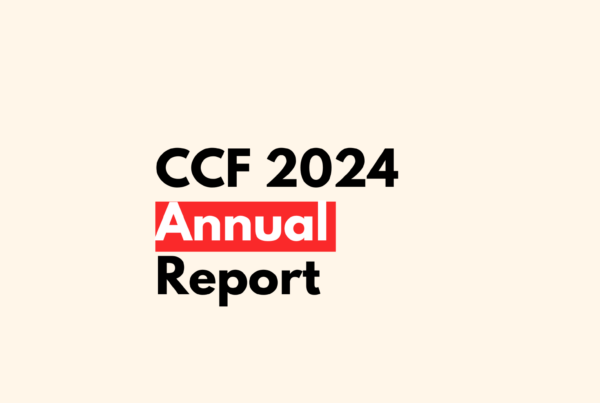Since 2022, INTERPOL has been publishing annual statistics on its use of notices—a welcome, if still limited, step toward transparency. The 2024 figures, released in July 2025, show a record number of Red Notices issued, and an increase in those refused or cancelled for non-compliance. While the data remains incomplete—especially due to the lack of country-specific detail that would help identify patterns of misuse—it’s still worth monitoring. These figures offer a useful lens not just on how many notices are being used, but on how often INTERPOL is actively refusing or cancelling them under its own legal framework.
Red Notices Reach Record Volume
In 2024, INTERPOL published 15,548 Red Notices, a 27% increase from 2023 and the largest annual total on record. Red Notices—used to request the arrest of individuals for extradition—remain the most powerful instrument within INTERPOL’s notice framework.
In 2024, INTERPOL issued 15,548 Red Notices—a 27% rise from the previous year and the highest number ever recorded
Other notice types showed smaller changes:
- Blue Notices increased marginally from 3,546 (2023) to 4,078 (2024)
- Yellow Notices rose modestly from 2,687 to 3,345
- Green Notices remained comparatively low and stable at 561
This continued rise underscores the expanding operational reliance on Red Notices in cross-border law enforcement.
Rejections and Cancellations Also Break Records
In 2024, 2,462 Red Notices and diffusions were refused or cancelled by INTERPOL’s Notices and Diffusions Task Force (NDTF) for non-compliance with INTERPOL’s legal framework. This represents a 54% increase over the 2023 total of 1,598, and marks the highest figure recorded to date.
Breakdown of refusals:
- 111 under Article 2 of the Constitution (failure to respect human rights)
- 194 under Article 3 (political, military, religious, or racial nature)
- 2,157 under the catch-all category of “other grounds”
This last category—comprising nearly 88% of all refusals—remains ambiguous and opaque. It encompasses a wide array of procedural and substantive deficiencies, including insufficient documentation, failure to meet seriousness thresholds, and non-cooperation by National Central Bureaus (NCBs). INTERPOL itself notes that “some non-compliant decisions may arise from more than one legal basis”—for instance, where both Article 3 and a procedural defect are at issue.
This raises an important concern: when a request is refused both on Article 3 grounds and for a procedural failure, how is it categorized? If such cases are defaulted into the “other” column, this practice risks concealing the true frequency of politically motivated requests and may distort perceptions of systemic misuse. The current reporting format does not clarify how overlapping grounds are treated, and offers no breakdown of dual findings—leaving critical legal questions unanswered.
“In 2024, INTERPOL refused or cancelled 2,462 Red Notices and diffusions for non-compliance—a 54% increase over 2023 and the highest number on record.”
Scope and Limits of the 2024 Statistics
The 2024 figures point to two key developments: first, a sharp rise in the use of Red Notices across borders; second, a more active role by INTERPOL’s internal compliance team in screening out requests that don’t meet legal standards. Taken together, they reflect a system under growing operational pressure but also under closer internal control.
Still, the published data offers only a partial view. The refusal and cancellation figures released in July 2025 cover only the decisions made by the NDTF—an internal unit that reviews notices before they’re published. These are administrative, non-adversarial checks, applied based on INTERPOL’s internal rules.
But that’s only one part of the picture. These statistics do not include outcomes from the Commission for the Control of INTERPOL’s Files (CCF), which reviews requests from individuals who challenge Red Notices or other data already processed in INTERPOL’s system. The CCF decisions are not reflected in the figures released by INTERPOL, but are instead published separately in the CCF’s annual report.
What’s more, the dataset is missing something essential: any information on which countries submitted the refused notices. Since 2022, INTERPOL has taken steps toward greater transparency by publishing basic statistics. But without a country-level breakdown, it’s impossible to identify patterns of misuse by specific member states—a crucial step in detecting politically motivated abuse and improving accountability. As things stand, the data remains too general to be useful for that purpose.
This gap in transparency was raised publicly by Charlie Magri during the October 2024 briefing before the U.S. Helsinki Commission, where he recommended that INTERPOL begin publishing statistical breakdowns by country of origin. As he argued, such reporting would not only promote accountability but do so in a measured way—without naming or shaming countries. Instead, it would offer a clearer view of how the system is functioning, and where it might be falling short.
“The absence of a country-specific breakdown makes it impossible to identify patterns of misuse by individual member countries—an essential step in addressing politically motivated abuse.”
Charlie Magri, Written Testimony before the U.S. Helsinki Commission: “Countering Authoritarian Abuse of INTERPOL”, 29 October 2024, Available at: https://www.csce.gov/wp-content/uploads/2024/10/57-135.pdf
Otherside advises clients and legal teams worldwide on challenging Red Notices and other INTERPOL alerts. If you or your organization are affected by INTERPOL mechanisms—or if you’re seeking strategic advice on data access, deletion, or reform—please contact us.





